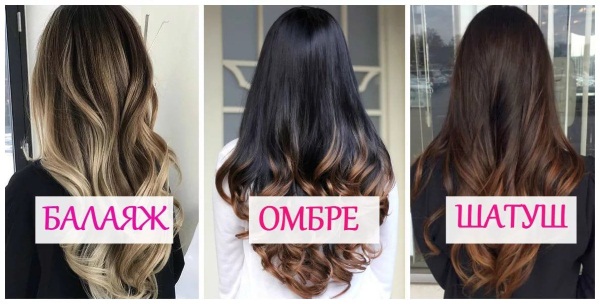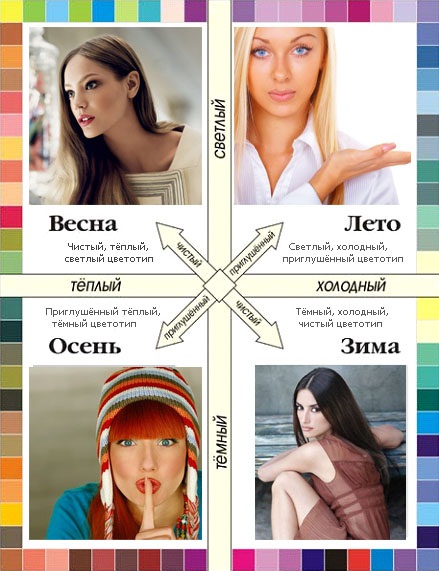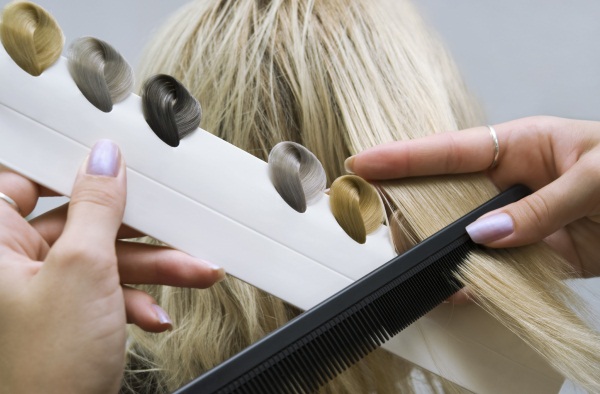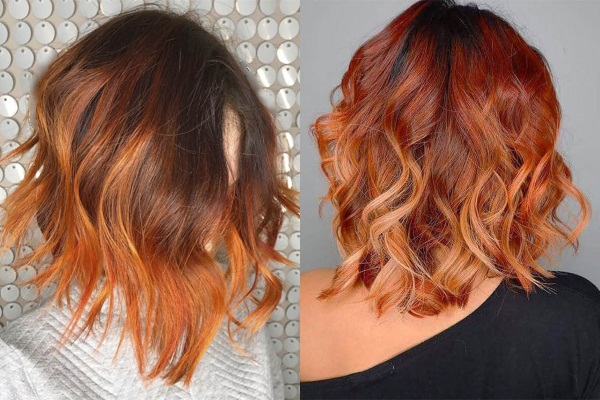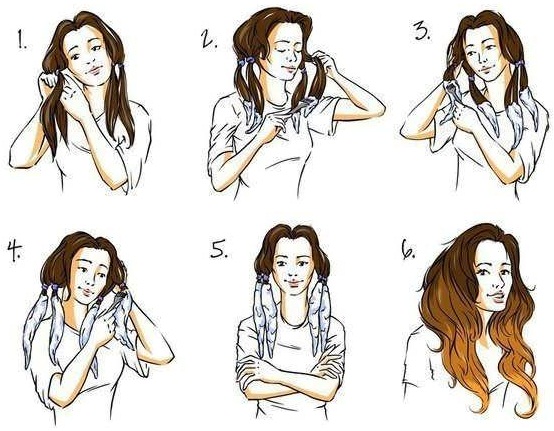Ombre is a hair coloring technique that allows you not only to change the image, but also to give freshness to your hair without the use of scissors.
This method of changing the color of strands can be used for any age and for any hair length. Despite the fact that there are no restrictions on the natural / basic tone of the curls and the chosen dye color, dyeing is more often applied on dark hair and using dye products of red shades.
What is an ombre?
Ombre is a combination of 2 or more colors along the length of the hair. The transition can be carried out both from dark to light, and vice versa. Initially, this dyeing method was used to impart a burnt-out shade on the hair, that is, a smooth transition of color from dark to light was carried out, observing the natural tone of the strands.
Ombre using natural shades makes the curls unique, helps to change the image, without changing the hairstyle, and also allows you to emphasize individuality both in everyday life and on holidays. The use of a red shade on dark hair allows you to attract attention and emphasize the passion of nature.
The selection of colors for dyeing, the sharpness or smoothness of transitions, as well as the choice of hair length are made at the request of the client.
Pros and cons of staining technique
Red ombre for dark hair, thanks to the harmonious combination of colors, allows you to give uniqueness to any hairstyle. When choosing this staining method, it is important to first familiarize yourself with its advantages and disadvantages.
Pros:
- you can change the color of the strands both close to the hair roots and at the very ends;
- the possibility of performing at home;
- the hair roots are not affected, as a result, no adjustment is required (hair coloring at the roots when they grow back);
- suitable for hair of any length and any natural color;
- the paint does not affect the skin and follicles, therefore nutrition and hair growth are not disturbed;
- allows you to visually increase the volume of hair and correct the oval of the face;
- the ability to combine not only 2 colors;
- ombre emphasizes the saturation of the natural hair color;
- smooth transitions and compatibility of tones are selected at the request of the client;
- henna can be used to give a reddish tint to the tips, it will enhance the color and eliminate split ends. This natural dye, when dyeing the hair over its entire length, stands out by obtaining an undesirable shade in subsequent dyes. With ombre, with a color change only at the ends, after cutting them, you can use any paints with any tone;
- ombre can be used at any age. With the right combination of colors, you can visually reduce age.
Minuses:
- the complexity of the dyeing technique when combining several colors with a smooth transition or when performing ombre on short hair;
- if the shade is adjusted often, then the hair becomes dry and brittle, split ends quickly appear;
- when dyeing hair in the salon, the cost is high from 4000 to 15000 (depending on the number of colors used, the choice of smoothness of the transition and the length of the strands;
- requires special hair care to maintain the brightness of the color for a long time;
- gray hair near the hair roots is not painted over. Therefore, preliminary coloring of the strands is required to eliminate gray hair;
- not used for dry hair and split ends. It is required to pre-heal the hair.
An additional advantage of ombre is the production of special coloring agents that take care of the hair and are washed off after 1-1.5 months. This allows you to experiment with color, as well as choose the right shade for your hair.

 Don't miss the most popular column article: Trendy hair colors this year. Photos and trends in hairdressing.
Don't miss the most popular column article: Trendy hair colors this year. Photos and trends in hairdressing.Who suits the red ombre for dark hair?
Before choosing an ombre with a red tint for dark strands, you need to decide how much this dyeing technique will be combined with skin tone, natural hair shade and daily style.
Selection features:
| Criterias of choice | Characteristic |
| Face oval |
|
| Skin color | The coloring agent should be combined with the tone of the skin. That is, with pale skin, it is not recommended to use too light colors and vice versa. Incorrect color matching can visually increase age. Color combination by skin color type:
|
| Life style | When working in an office or in other "strict" professions, it is recommended to choose an ombre with a natural shade and smooth transitions. In the absence of restrictions, the choice of staining color is not limited. |
| Eye color |
|
In the presence of freckles or age spots, the choice of a bright red color is not recommended, it will only emphasize skin imperfections. Also, for hair prone to damage, the choice of light shades (they dry out more and damage the hair structure) and dark shades (split ends are more noticeable) is not recommended.
How do you choose the perfect shades?
Red ombre for dark hair can be done in a variety of variations by changing the shade of the red tone or by stretching the color (that is, make the transition smoothly or with sharp contrast).
Recommended coloring options (color combinations):
- if you have your own dark hair, a smooth transition from a natural tone further from auburn to bright red is recommended. To create a stretch, you need to use at least 2 reddish colors. You can also create a "blazing flame" look. To do this, you need to make a transition from natural hair color to red, then to dark red with a gradual color transition to rich yellow. The technique is complex and requires not only knowledge, but also work experience;
- if the natural hair color is red. The choice of paint tone depends on the color type of the skin. With light skin, it is recommended to dye the ends of the hair in a calmer reddish tone. With a dark epidermis, it is recommended to use a bright red color for ombre;
- for black natural curls, bright red tones are often used with both a sharp and a smooth transition. Black strands with copper ends are also ideally combined;
- with a natural light brown color of the strands, it is recommended to design the ends in a wheat or golden tone.
Before choosing the desired color for the ombre technique, you need to check the color combination for all characteristics:
- skin tone;
- natural hair color;
- eye color;
- life style;
- the presence of age spots on the face;
- age.
For a visual representation of the desired result, it is recommended to use a special program (provided in hairdressing salons). The most popular is ombre with a natural and smooth transition from a natural color to a reddish shade.
Problems with combining red with dark hair
When choosing to dye the strands using the ombre technique for dark hair with a transition to a reddish shade, the following nuances should be considered:
- it is difficult to achieve light red tones from the first staining (preliminary clarification may be required);
- due to the peculiar structure of dark hair, the dye is quickly washed out from the ends, as a result, frequent adjustments (re-dyeing) are required to maintain color, this causes exhaustion, dryness and brittle hair;
- for a better combination of a red tone with a natural color, it is recommended to perform a smooth transition, the implementation of which at home is quite difficult.
It is important if henna was previously used for hair dyeing or for the purpose of leaving, then the ends of the hair may not be dyed red, but in a carrot color.
Features of red ombre for dark hair of different lengths
Red ombre can be done in different variations (using several colors or one tone, as well as only at the ends or 80% of the length of the strands), while it should be taken into account how dark the natural tone and how long the hair is.
Short straight
In the presence of a short haircut, to perform ombre, only one tone of red is often used, mainly at the ends.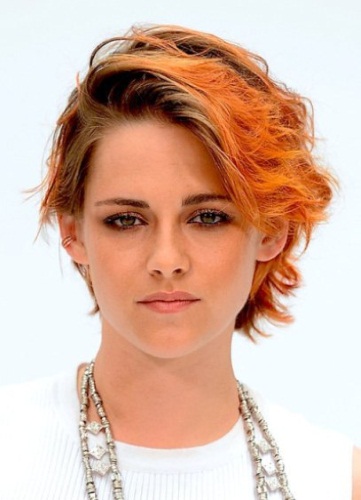
Average (square)
With an average length of strands, ombre can be made in any design with a combination of several shades and color stretching. Thanks to the correctly chosen haircut and combination of tones, you can visually increase the volume of hair, correct the oval of the face and reduce age.
The most common option is ombre from the middle of the auricle. If you have bangs, it is not recommended to dye its ends.

 Don't miss the most popular column article: Fashionable bob bob haircut for medium hair. Photo, front and back views.
Don't miss the most popular column article: Fashionable bob bob haircut for medium hair. Photo, front and back views.Long
For long hair, ombre is recommended to be used below the shoulders. Any variation of the color combination is allowed, both with stretching and with sharp transitions. This coloring technique allows you to give uniqueness to hair both in loose form and when styling a hairstyle.
Staining techniques
Red ombre for dark hair, regardless of the chosen dyeing technique, is made in compliance with the main stages:
- Divide hair into zones:
- parietal (crown). When dyeing, only the ends of the strands from this zone are not dyed);
- temporal. It is recommended to divide into 2-3 parts according to horizontal partings;
- occipital. Additionally, it is required to be divided into upper and lower parts. With thick or long hair, it is additionally necessary to highlight the lateral occipital zones.
- Decide at what length the staining will be done.
- In each zone, comb the ends up to the place where the coloring agent is applied. This will allow for a more even color distribution.
- The paint is applied using the selected method.
- After waiting for the desired time interval, the paint must be washed off and use fixers that will provide a longer color retention.
If it is necessary to lighten the hair (to give dark hair at the ends of light shades), after 2 points, bleaching is performed. After this procedure, it is required to withstand a period of at least 14 days. After that, the ombre is performed in compliance with the above points.
Classic
With the classic execution, it is required to observe a smooth transition from natural dark strands to lightened ends. The less pronounced the transition, the more natural the coloring looks. It is recommended to use a coloring agent 2-3 tones lighter.
Vintage
The method is similar to the classic version. In this case, the overgrown colored roots are imitated, so you can use any shades of red color from saturated to soft. 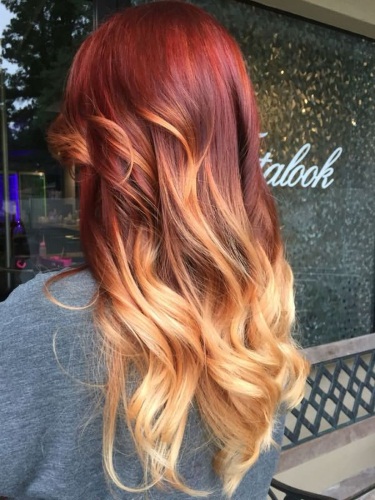
Cross ombre
The transverse ombre is performed using only one coloring agent. The effect of the strands burnt out in the sun is created. Tones close to natural color are selected.
Ombre with a clear border
With this implementation, it is required to observe the sharpness of the transition from a natural tone to colored strands. You can use one coloring agent or several. Contrast is required at each transition. The choice of colors is carried out at the request of the client. Easy to do at home, especially when using one tone of paint.
Contour ombre
Hair coloring is done along the contour. This method allows you to hide the imperfections of the face oval or to emphasize a multi-level haircut. You can use coloring agents both for lightening and darker than the natural tone.
Ash
Ash tones are used for staining.
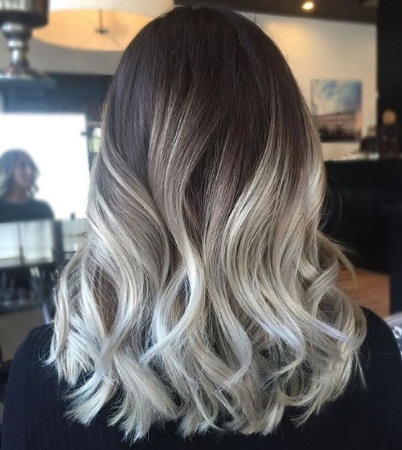
Since the color is similar to gray hair, this method is not recommended for women over 40. Otherwise, it will accentuate age and visually increase the number of wrinkles on the face.
Babylights
This method uses dyes 1-2 tones lighter than natural. The purpose of this dyeing method is to give the hair the appearance of "baby curls", which stand out with a special shine.
Babylights additionally allows you to add volume and healthy appearance to your hair. The staining process is multi-level and laborious; it is almost impossible to perform at home.
Pony tail or ponytail
When dyeing, it is required to create a pronounced effect of burnt hair at the ends. This allows you to highlight the light ends from the natural hair color when styling the tail on the back of the head.
Color option
With this staining technique, it is possible to use different colors of the palette from pink to purple. 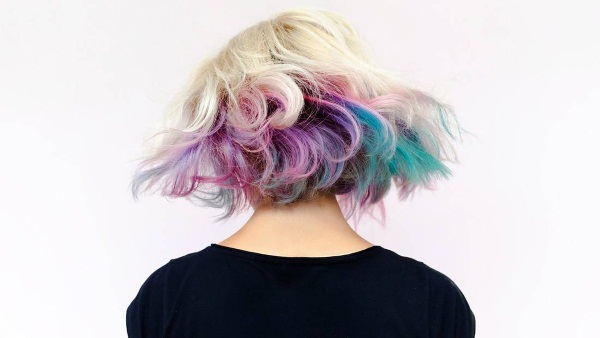
Fiery red-red ombre on dark hair
When performing this method, a fiery red color can be, both at the roots (suitable for women with red hair) with dark ends, and vice versa. When staining, it is important to maintain a pronounced contrast.
How to do ombre staining at home?
Before performing an ombre at home, you need to familiarize yourself with the nuances of the process:
- the dye should not dry out on the hair;
- paint must be applied as quickly as possible, otherwise the color scheme will not be observed;
- it is not recommended to use foil to separate strands. Otherwise, the border may blur and move above the planned level.
Since the hair roots are not affected during the dyeing process, dyeing can also be performed on clean hair.This will additionally allow the dye to penetrate more deeply into the hair (under the action of warm water, the hair becomes more pliable).
Stages of staining when performing ombre:
- Get acquainted with the coloring agent and its holding time on the hair. According to the table, determine what color should be obtained for a given natural color of the strands.
- Determine the level of "lightening" of the strands.
- Select the desired paint application technique (classic, clear-cut or otherwise).
- Prepare the necessary inventory:
- rubber bands or hair clips;
- a plastic bowl for the coloring agent;
- protective gloves;
- a brush for applying the coloring composition to the hair;
- combined comb;
- oilcloth peignoir.
- Wear a peignoir to protect clothing from paint.
- Carefully comb the hair from tangled ends and divide it into 4 strands (2 strands near the face and 2 strands in the back) using elastic bands or plastic clips (metal is prohibited, as they can react with the paint).
- Open the coloring agent (it is impossible to open it in advance, the composition loses the necessary properties).
- Put on gloves and dilute the paint in a bowl (if you want to mix the composition).
- Apply paint to each strand, making sure that all hair is dyed.
- Withstand the dye on the hair according to the instructions. Time is recorded after applying the composition to the last strand.
- Remove rubber bands or clips. Wash off hair dye. Use a fixer if required.
- Rinse hair with conditioner.
If the hair is too thick, it is recommended to divide it into more strands. And the time to mark individually for each strand, so as not to burn the hair with the composition (especially when choosing light colors).
How long will the result last?
Subject to the rules for caring for dyed hair, it is recommended to adjust the ombre every 1-3 months. Depends on the choice of color tone and individual hair structure. More frequent coloring of the ends is dangerous by depleting hair.

 Don't miss the most popular column article: Fashionable bob bob haircut for short hair. Photo, front and back views.
Don't miss the most popular column article: Fashionable bob bob haircut for short hair. Photo, front and back views.Hair care after coloring
If on the packaging with the coloring agent, after washing off the composition, washing the hair is not provided, then the procedure is recommended to be performed in a day. This will keep the tone bright.
For subsequent water treatments, use only specialized shampoos for colored hair. They also keep the color and improve the condition of the hair (make it softer and more manageable). Use a hair dryer, curling iron or iron in rare cases, as they additionally dry the hair.
Before adjusting the ombre, it is recommended to strengthen the hair with masks or medicated shampoos; if there are split ends, they must be cut off.
Ombre stands out among the methods of dyeing hair with the possibility of different versions. This method allows not only to give uniqueness to the hairstyle, but also to add additional volume to the hair and correct the oval of the face. The most popular is the execution of a red ombre on medium-length hair of a dark shade.
Author: Kotlyachkova Svetlana
Article design: Mila Friedan
Ombre staining video
How to make an ombre for dark hair at home:

